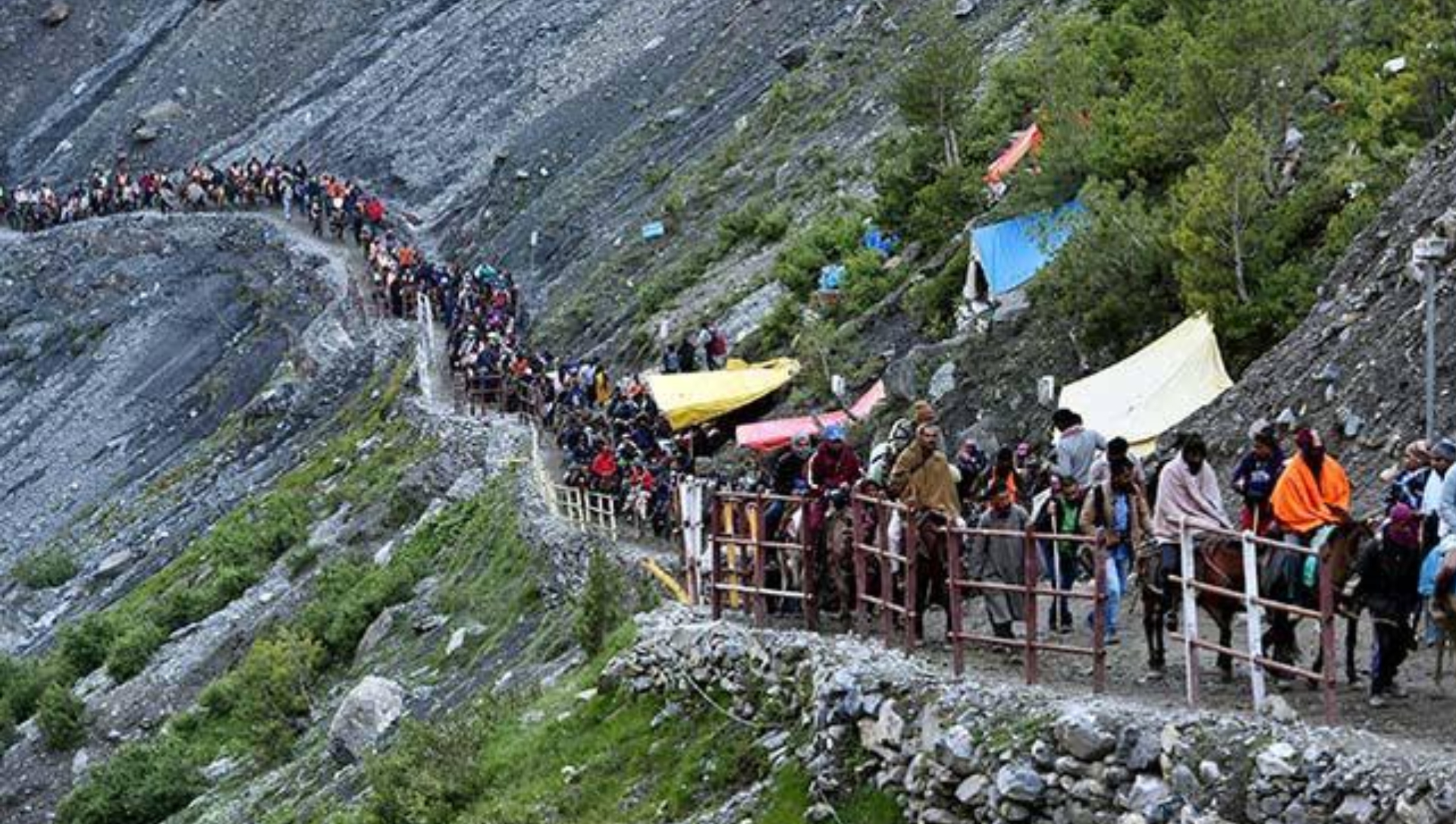SRINAGAR: With the terror threats looming over the Shri Amarnath Yatra, the security forces and the organisers are going all out to ensure the safety of the pilgrims.
In the wake of threats, the movement of all the devotees will be monitored on an hourly basis as the Radio Frequency Identity Tags (RFIDs) have been introduced for the first time. Shri Amarnathji Shrine Board (SASB) has made RFID tags compulsory for devotees taking the Yatra. The board has decided entry will not be given to Amarnath Yatra pilgrims without RFID tags.
“The RFID tags would help in tracking a pilgrim and tell where the person is. RFID has lots of benefits and among them, the most important one is that it would find out if there are any unauthorized persons, which would help the security agencies to identify them,” Shrine Board officials said.
Besides, devotes, the ponywalla, those looking after Langer Sewa and others would be provided with these RFID tags. The local traders who set up shops too will also be provided with these tags.
The tagging has been decided against the backdrop of threats of terrorist groups possessing sticky bombs – explosives that can be attached to vehicles and detonated remotely – and are reshaping their standard operating procedure for the pilgrimage.
Meanwhile, the Jammu and Kashmir administration is also not taking any chance on the health of the pilgrims. They set up two 100-bedded hospitals at Baltal and Pahalgam base camps that will provide advanced healthcare facilities for the Yatris
“We are setting up uninterrupted healthcare services to the Amarnath Yatri’s this year,” Dr Mushtaq Rather, director of health services, J&K, said. “As the annual Amarnath Yatra is resuming after two years, we expect a large number of Yatri’s this year for which preparations have been already done,” he said.
The department had set up round-the-clock health services and a control room which would provide advanced healthcare services to the pilgrims in any kind of medical emergency, Dr Rather said.
“DRDO has set up two 50-bedded hospitals at Baltal and Chandanwari base camps. In addition to these the Health Department has set up two 50-bedded hospitals at both base camps,” Dr Rather said. “X-ray, USG, and oxygen facilities have also been made available,” he said.
Besides, the senior health facility officer said, 11 medical aid centres, 12 emergency aid centres, 26 oxygen booths, and 15 on-route facilities have been established for the pilgrimage.
Meanwhile, the organisers are also keeping an eye on the weather with round-the-clock weather monitoring for Yatra. Four additional radars have been installed in J&K.
“These doppler radars are powerful like the one installed in Srinagar,” Sonman Lotus, director of the Meteorological Department, said adding that radars will cover weather activity within a 100-kilometre radius range.
These radars, he said, are in addition to the Automatic Weather Stations (AWS) established every year at Chandanwari, Sheshnag, Panjtarni, Holy Cave and Baltal during the duration of the annual pilgrimage.
The first update for pilgrims will be released by the Met department at 4 am and in case of erratic weather conditions, the SASB and other officials involved in the conduct of the pilgrimage are informed at least three hours in advance.
Senior Met officials here said that besides the pilgrims, all the officials involved in managing and monitoring the pilgrimage will be alerted. “There will be WhatsApp groups and alert gets circulated in those,” the senior Met official said.
The 43-day-long Amarnath yatra is scheduled to start on June 30 from the twin routes – traditional 48-km Nunwan in south Kashmir’s Pahalgam and 14-km shorter Baltal in central Kashmir’s Ganderbal – after a hiatus of two years owing to the coronavirus pandemic.
The Amarnath Yatra is an annual Hindu pilgrimage to Lord Shiva’s 3,880-metre-high cave shrine located in the upper reaches of the Himalayas in the southern part of Kashmir.
This year over three and a half lakh pilgrims are expected to take part in the Yatra. The online registration has already begun. The temple is not directly accessible by road and has to be reached by an uphill trek that takes multiple days to reach the shrine.










